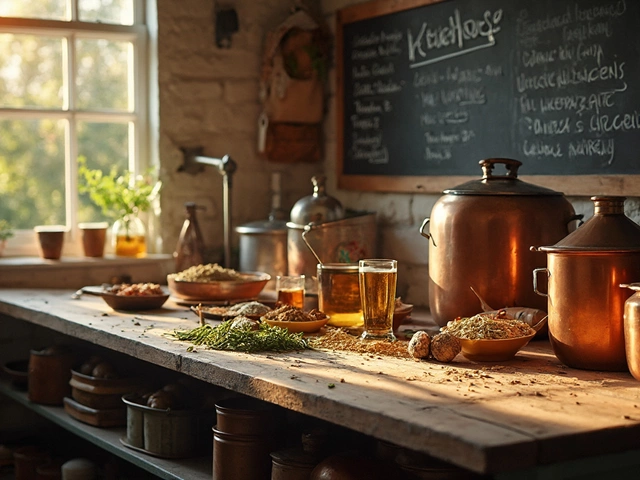Whiskey Characteristics: The Basics Every Drinker Should Know
When you pick up a glass of whiskey, you’re not just drinking alcohol – you’re tasting a story. The flavor, smell, and feel all come from a handful of core characteristics. Knowing these basics helps you choose a dram you’ll love and talk about it with confidence.
Core Factors That Define Whiskey
Age. Older whiskies usually have smoother mouths because the wood in the barrel breaks down harsh edges. A 12‑year‑old Scotch will feel softer than a 6‑year‑old bourbon, but age alone isn’t a guarantee of quality. Watch the flavor notes, not just the number.
Grain type. Corn, rye, barley, and wheat each bring something different. Corn gives a sweet, buttery feel – that’s why bourbon leans sweet. Rye adds spice and a peppery bite. Barley, especially malted barley, brings nuttiness and depth, which you’ll find in many Scotch whiskies.
Region. Where the spirit is made shapes its character. Scottish whiskies from Islay are famous for heavy smoke and sea salt, while Speyside whiskies are fruitier and lighter. In the U.S., Kentucky bourbon tends to be rich and vanilla‑forward, whereas Tennessee whiskey often has a smoother, charcoal‑filtered profile.
Barrel influence. The wood matters. American oak usually gives vanilla, caramel, and oak flavors. Sherry casks add dried‑fruit and nutty notes. Some distilleries use wine or rum barrels for extra complexity. The longer the whiskey sits, the more it pulls flavors from the wood.
Proof (alcohol content). Higher proof whiskies carry stronger heat and can mask subtle flavors. Lower proof drinks feel smoother and let delicate aromas shine. If you’re new, start with 40‑45% ABV and work your way up.
How to Use These Characteristics When Tasting
First, look. Hold the glass up to light – a good amber color often hints at the barrel type. Next, give it a gentle swirl and sniff. Do you catch smoke, fruit, spice, or something sweet? Try to match what you smell to the grain or region clues you learned.
Take a small sip and let it coat your tongue. Notice the initial taste (the “nose” of the palate) and then the finish after you swallow. A long, smooth finish usually means a well‑aged spirit, while a short, sharp finish could signal a younger whisky or higher proof.
When you’re comparing two drams, focus on one characteristic at a time. Taste a bourbon and a rye side‑by‑side and you’ll feel the difference in spice vs. sweetness. Or compare a smoky Islay Scotch with a fruity Speyside to see how region changes the profile.Use this knowledge when you shop. If you love sweet, caramel notes, look for bourbon aged in new oak or whiskies finished in sherry casks. If you prefer a dry, peppery punch, try a rye or an Islay Scotch.
Remember, the best way to learn is to taste lots of whiskies and note what you like. Keep a simple notebook: write down age, grain, region, barrel, and your flavor impressions. Over time you’ll spot patterns and be able to pick a bottle that fits your taste without guessing.
Bottom line: whiskey characteristics aren’t a mystery. They’re the building blocks of every dram. By understanding age, grain, region, barrel, and proof, you’ll taste with purpose and enjoy every sip a little more.
Whiskey legs, also known as 'tears' or 'fingers,' are the streaks that form on the inside of a glass when you swirl your whiskey. They tell us more than just how pretty the glass looks. These mysterious lines can give insights into the whiskey's alcohol content and viscosity. Whether you're a newbie or a seasoned taster, understanding whiskey legs can enhance your drinking experience.
View Details

